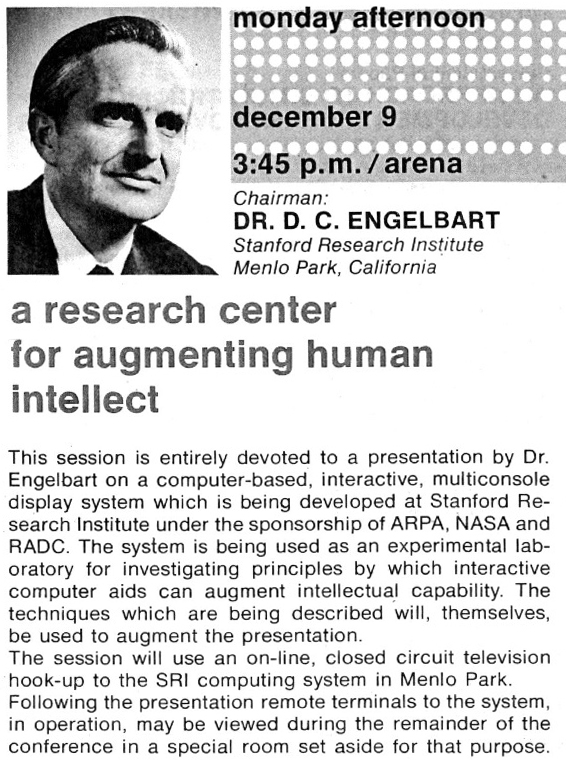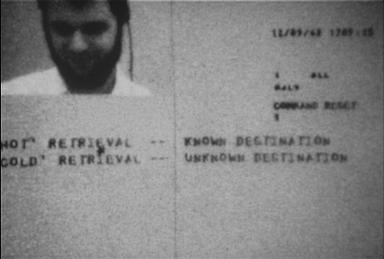hello friends! new(ish)!
The Mother of All Demos: Difference between revisions
Jump to navigation
Jump to search
>Se7en1 No edit summary |
>Se7en1 m typo, add note about mouse use |
||
| Line 1: | Line 1: | ||
{{stub}} | {{stub}} | ||
[[File:Dce1968conferenceannouncement.jpg|thumb|right|alt="An event poster from 1968|The announcement for the 1968 conference, it is billed as "A Research Center for Augmenting Human Intellect]] | [[File:Dce1968conferenceannouncement.jpg|thumb|right|alt="An event poster from 1968|The announcement for the 1968 conference, it is billed as "A Research Center for Augmenting Human Intellect"]] | ||
'''The Mother of All Demos''' is a colloquial name given to a presentation from 1968 for the NLX Machine by Douglass Engelbert in 1968. It was fundamentally a realization of the Memex machine by Dr. Vannever Bush in his famous essay ''As We May Think''. It introduces numerous concepts now standard to computing, including Hypertext, using a mouse, telecommunications, wireless networking, versioning, and several other things. | '''The Mother of All Demos''' is a colloquial name given to a presentation from 1968 for the NLX Machine by Douglass Engelbert in 1968. It was fundamentally a realization of the Memex machine by Dr. Vannever Bush in his famous essay ''As We May Think''. It introduces numerous concepts now standard to computing, including Hypertext, using a mouse (years before Xerox), telecommunications, wireless networking, versioning, and several other things. | ||
[[File:On Line System Videoconferencing FJCC 1968.jpg|thumb|left|alt="A black and white still from the presentation"|Demonstrating early attempts at Videoconferencing and Collaborative-editing during the presentation]] | [[File:On Line System Videoconferencing FJCC 1968.jpg|thumb|left|alt="A black and white still from the presentation"|Demonstrating early attempts at Videoconferencing and Collaborative-editing during the presentation]] | ||
Revision as of 20:05, 6 May 2019

The Mother of All Demos is a colloquial name given to a presentation from 1968 for the NLX Machine by Douglass Engelbert in 1968. It was fundamentally a realization of the Memex machine by Dr. Vannever Bush in his famous essay As We May Think. It introduces numerous concepts now standard to computing, including Hypertext, using a mouse (years before Xerox), telecommunications, wireless networking, versioning, and several other things.

It is widely considered one of the most significant events in the history of the development of the computer.